Global S&P 100 vs S&P 500 – Which Suits Traders Most?
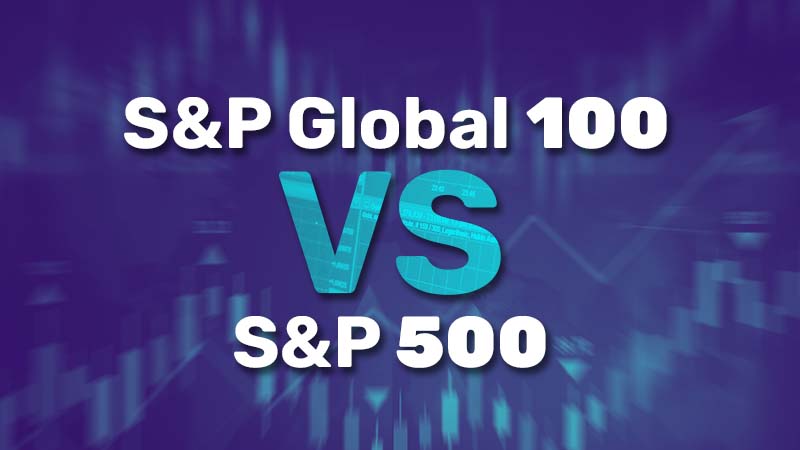
Some people prefer to trade in index funds because of the diversification of plenty of stocks, and generally, at an affordable price. It’s one of the main reasons traders see index funds to be, potentially, a more sophisticated option compared to individual stocks.
S&P 500 and S&P Global 100 are amongst the most popular and well-performing index funds.
These indices are comprised of hundreds of the largest and most renowned United States companies’ stocks from all industries. This aspect makes the two a reasonably low-risk way of investing in stocks.
Certainly, as Covid-19 showed in 2020 and 2021, even the entire equity markets can drastically fluctuate, mainly if something significant occurs.
Here is everything that investors need to know about the S&P 100 vs S&P 500 battle.
What is the Standard & Poor’s 500 (S&P 500)?
Also known as S&P 500, it’s a capitalization-weighted stock index that tracks the performance of about 500 large-cap companies in the US. This index fund could be seen as the best gauge of the US economy. It spans all market sectors, and its components account for 80% of the US equity market capitalizations.
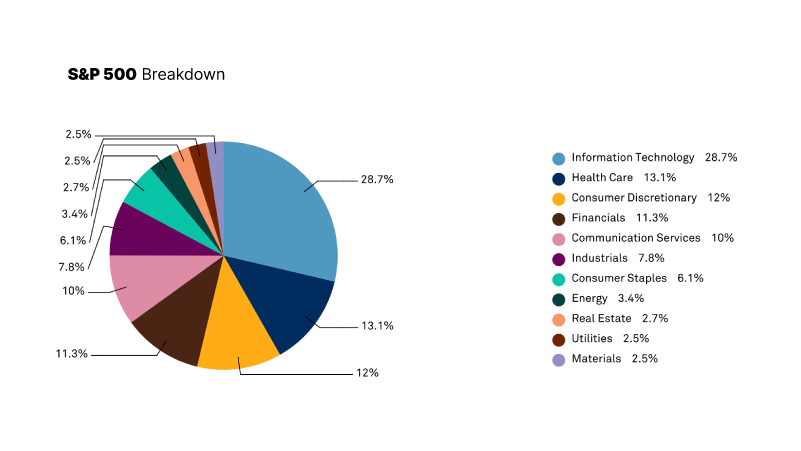
Why is the S&P 500 so popular?
Since its development in 1957, this index fund has encountered several market crashes and downturns. Nevertheless, given sufficient time, it has always recovered in line with market trends.
Over the years, it has earned an average return of roughly 10% annually; for this reason, both investment experts and retail investors are drawn to this strong performance.
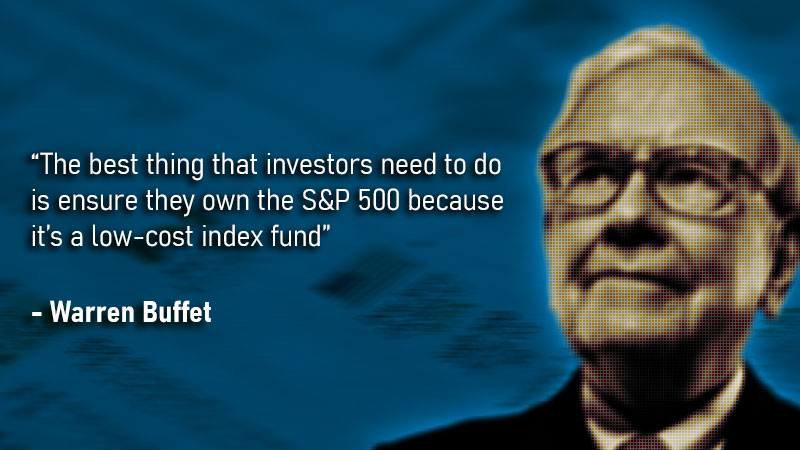
“The best thing that investors need to do is ensure they own the S&P 500 because it’s a low-cost index fund” – Warren Buffet.
Investing in this index fund consistently could be a good option for most traders matching the criteria.
A History of S&P
S&P originated from Poor’s Publishing and the Standard Statistics Bureau that released its first stock market indicator in 1923, comprising of 233 companies.
The two companies merged in 1941 to form the Standard & Poor’s. S&P combined its index operations with the Dow Jones indices in 2012 to become a dominant force in stock market indexes. It was later rebranded in 2016 to become Standard & Poor Global. Its divisions include Standard & Poor’s Global Market Intelligence, Standard & Poor’s Global Ratings, Standard & Poor’s Global Platts, and S&P Dow Jones Indices.
The firm comprises over 1,400 credit analysts and over 1.2 million credit ratings issued to the financial sector, securities, corporations, and governments. S&P is a central credit risk researcher covering several benchmarks, industries, geographies, and asset classes.
S&P 500 Index Futures
S&P 500 launched its futures contract at Chicago Mercantile Exchange (CME) in 1982.
When calculating S&P’s future performance price, one can get it by multiplying the index’s value by $250. For instance, if S&P’s value is at 3,000, then the market index fund value is 3,000 x $250 or $750,000.
As with any other future, traders can only take a position after fronting a fraction of the contract value, which signifies the futures contact’s margin. Remember that these margins are different from those used in stock trading.
Top Companies in S&P
As said earlier, S&P comprises the 500 largest publicly-traded organizations in the US. Most of these are household names: Apple, Microsoft, Bank of America, Coca-Cola, Visa, and Exxon Mobile. A company should have a market capitalization of at least $11.8 billion and have at least 10% of its shares in the public market to be listed on the S&P index.
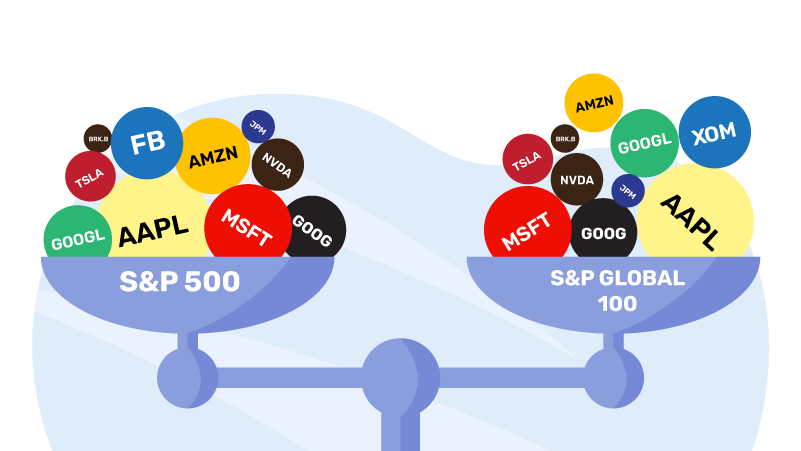
S&P Ratings
S&P rating index debt instruments, such as bonds and the firms that issue them based on creditworthiness; for example, academic grades, every rating comprises a letter on a scale of A to D.
In some cases, the letter has a plus, minus, or even a number. A high grade signifies low risk. Any rating above BBB is regarded as the investment grade (safe investment), while anything below is speculative (risky).
Overview of MSCI ESG Fund Ratings
The objective of MSCI ESG Fund Ratings is to evaluate ETFs and mutual funds resilience concerning long-term opportunities and risks resulting from environmental, social, and governance (ESG) problems.
However, MSCI ESG Research is for information purposes only. Therefore, this MSCI ESG Research is subject to a disclaimer.
Every MSCI ESG Fund rating score ranges from CCC (last) to AAA (first). Often, this MSCI ESG Fund depends on the weighted average of the ETF’s or index fund’s holdings.
Currently, IHS Markit is the best place to get crucial information for investing in index funds. At IHS Markit, investors can get essential information, analytics, and research about major industries, governments, and financial markets.
The Significance of Number of Stocks in Index Funds
The main reason why investors might prefer the S&P index funds is that more than 500 companies offer exceptional diversification.
Merely put, diversification means that different stocks in various industries and sectors respond differently to market sustainability characteristics.
This stock market approach prevents stocks from decreasing their value concurrently and thus the odds of extreme losses possibly lower during crises and recessions.
What’s the Ideal Diversification?
Over the past three decades, analysis on the ideal number of stocks to create a diversified stock market portfolio has been on-course.
Although experts are yet to settle on a conclusive answer, it’s worth noting that these researches emphasize the minimum instead of the optimal.
Based on the investment objective, time periods, and market price returns, the minimum diversification can range between 20 and 100 stocks.
Thin Index Funds
Most broad indices are market cap-weighted, which means that the firm’s size can impact an index fund’s performance. In any business involvement, stocks comprising high market capitalizations have increased weighting, and a change in its price substantially affects the index performance.
On the other hand, small companies, which are a fraction of the large firms, have little impact on the index fund’s overall performance, meaning it’s hard to access premium stock prices.
Diversification: S&P 100 vs S&P 500
When it comes to sector diversification and S&P 100 VS S&P 500 battle, Standard & Poor’s Global 100 flaunts a broader sector than S&P 500. As of September 30, 2021, the best 10 holdings comprise IT, communication services, consumer discretionary, consumer staples, health care, and financials.
Although it accounts for nearly 30% of the index funds’ market value, the 10 largest stocks in the S&P 500 comprise four sectors: IT, communication services, financials, and consumer discretionary.
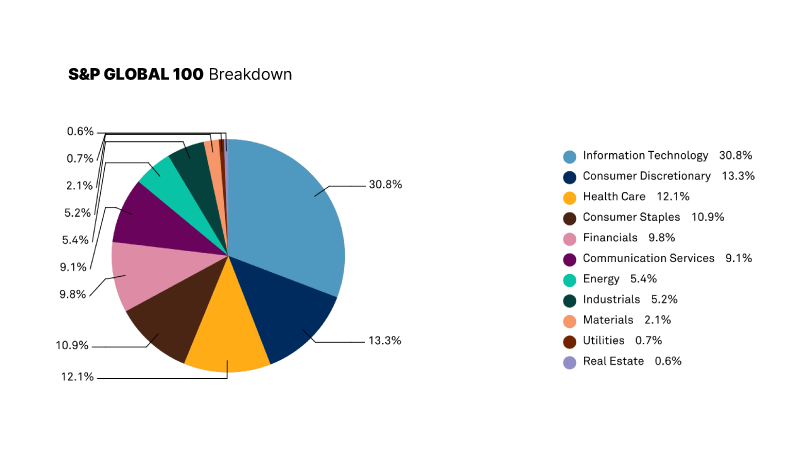
Explore CFDs on Index Funds With tixee
When it comes to traders in index funds, such as S&P 500, it’s sensible that traders join a regulated, licensed, globally renowned, reliable broker that focuses on customers. tixee seems to tick all these checkboxes as we prepare traders with an abundance of tools, platforms options, education, and more.
Join tixee and explore the various CFD indices straight away. The platform fits both advanced and beginner traders. As a general rule, traders may consider starting with a demo account to learn how to trade and test any available investment strategy.
